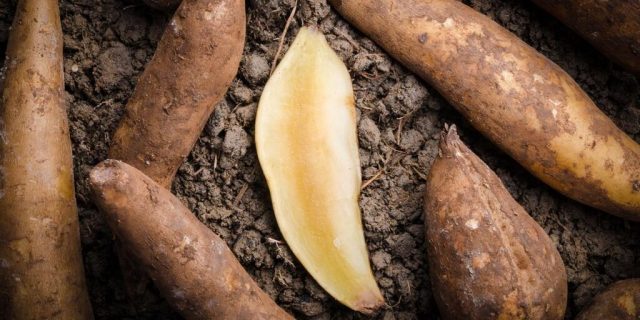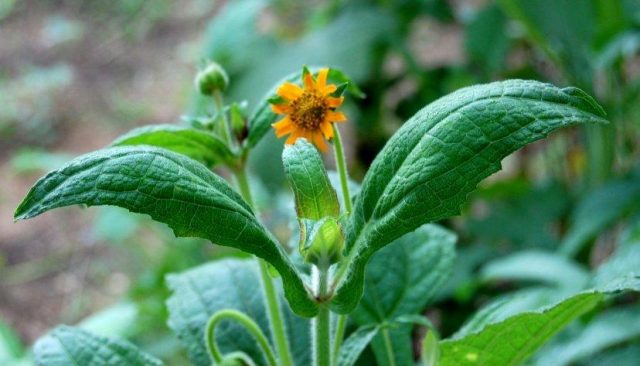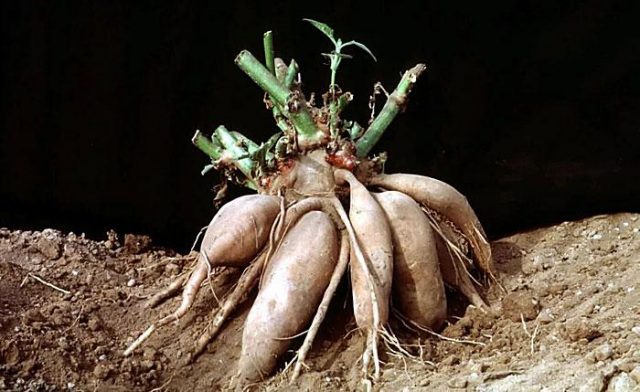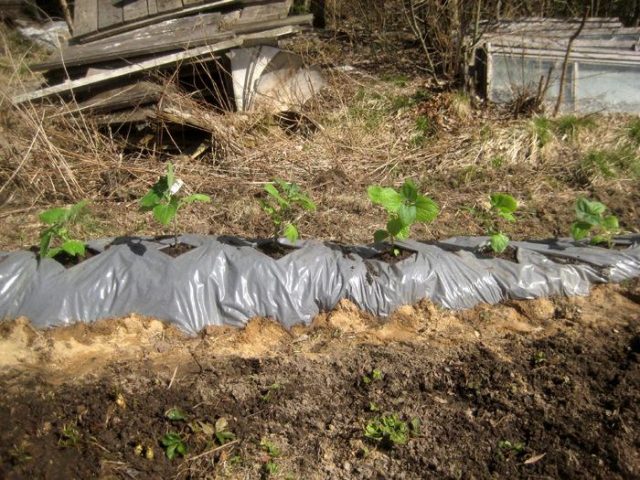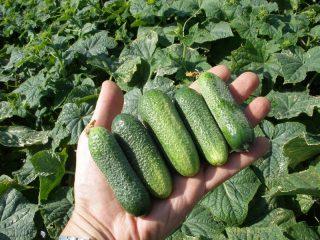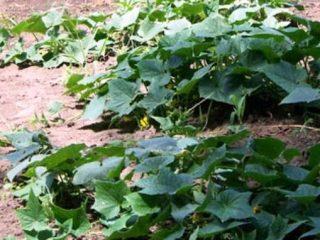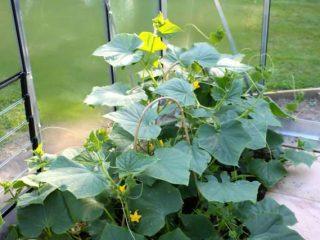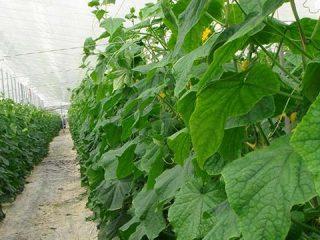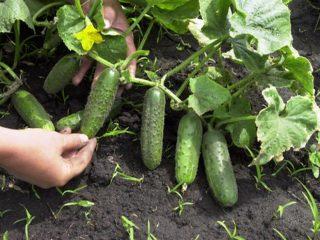Content
Recently, among plant breeders, a fashion has been spreading for exotic vegetables and fruits, which amaze the imagination with a variety of shapes and sizes. One of these plants, which is rapidly gaining popularity, is the yacon. When faced with this vegetable for the first time, people reasonably ask questions, what is its peculiarity and whether it can be grown in temperate latitudes. Lovers of unusual garden crops will not be superfluous to study in more detail the properties of this amazing plant.
What is yacon vegetable
Yacon, also known as the earth apple, is a plant in the Astrov family, along with Jerusalem artichoke and sunflower. The yacon originates from the highlands of Latin America, where it was cultivated in ancient times by the Inca tribes - because of its remarkable properties. The name "yakon" in translation from one of the Indian dialects means "fresh water". It very accurately describes the main feature of this vegetable, its juiciness, because the tubers of the plant are 70% water. Due to this, they were often used by travelers as a source of liquid. By the time of the arrival of the Spanish conquerors, the large-scale cultivation of yacon began to decline. And only recently, at the turn of the XX-XXI century. interest in this culture began to revive.
Description of the yacon plant
In the Andes, in its historical homeland, and in other countries, where weather conditions remain consistently warm for 6 - 7 months a year, the yacon reaches 2 - 2.5 m in height. In regions with a cold climate, including Russia, its growth is more compact and does not exceed 1.5 m. Outwardly, it stands out among other crops by large dark green leaf plates with asymmetric patterned edges. Petioles of yacon leaves are densely pubescent. The stem of the plant, on the other hand, is smooth and green in color, with characteristic purple blotches in the upper part.
The root system of the yacon is of particular interest. It is formed by rhizomes, on which buds are located, capable of giving life to new plants, and root tubers. The latter form bundles on which there are several large root crops. Under favorable conditions, 20 - 25 vegetables appear on one plant.
Although the yacon is called an earthen apple, in appearance this vegetable resembles a cross between a potato and a pear, as in the photo above. It also tastes little like vegetable crops and combines the fresh aroma of watermelon with the texture of melon and potato.
In addition to its unusual appearance and taste, this plant is distinguished by an unusual set of useful properties.
The benefits and harms of yacon
Yacon, like Jerusalem artichoke, is a rich source of polysaccharides. Thus, it contains a large amount of inulin, a natural substitute for insulin. It is able to regulate blood glucose levels, which makes yacon an indispensable vegetable in the diet of people with diabetes. In addition, inulin has the ability to bind heavy metals and toxic compounds in cells and safely remove them from the body.
The tubers of the plant have a beneficial effect on the functioning of the stomach and intestines due to their high fiber content.Its coarse fibers drown out hunger for a long time and serve as a favorable environment for the growth of beneficial bacteria, while limiting the growth of pathogens in the gastrointestinal tract. In addition, yacon root helps cleanse the body through its mild laxative properties.
A variety of vitamins and trace elements in this healthy vegetable are involved in improving metabolism, preventing various diseases of the cardiovascular system and supporting the stable functioning of the nervous system. And the antioxidants present in the plant resist free radicals in tissue cells, thus slowing down their aging. Yacon juice has similar properties.
The harm of this vegetable to the human body is practically absent. It is worth completely abandoning the use of plant tubers only in the case of individual intolerance to the vegetable, which is extremely rare. People with increased gas production should not abuse yacon - due to the abundance of fiber in it, which only intensifies the manifestations of flatulence.
Otherwise, this vegetable is completely safe for people of all ages and health conditions.
Yacon tubers composition
The chemical composition of yacon is rich in vitamins and minerals. It contains vitamin C, necessary for immunity, vitamins of group B, PP, phenol antioxidants, as well as caffeic and chlorogenic acids, which prolong the youth of cells and the body as a whole.
In addition, this vegetable contains selenium, which affects joint flexibility and improves reproductive function. In addition, the tubers of the plant contain phosphorus and potassium, which directly affect the strength of bone tissue.
Such a vast supply of beneficial properties and exotic taste of yacon inspire many growers to grow it on their site. It is quite possible to do this, you just need to study the features of the agricultural technology of this vegetable.
Growing yacon
Yacon is considered a fairly unpretentious plant in subtropical latitudes, but its cultivation in central Russia is associated with certain nuances.
Growing conditions
Despite its tropical origin, this vegetable takes root well in countries with a temperate climate, including Russia and Ukraine. However, in these regions, the properties of the plant's tubers are much less intense. For example, yacon grown in colder climates has a very low insulin content, and other polysaccharides in it are converted into less useful fructans. Therefore, it is worth considering this feature when planting a plant north of 55 ° N. sh., for example, in the Kirov or Perm regions.
Yacon does not tolerate cold snaps, and therefore at the very first frosts, the entire ground part of the plant completely freezes out. Vegetable tubers are more frost-resistant, but in order to prevent their death, special attention should be paid to protecting the soil from freezing. Mulching the plant will help to cope with this.
Yacon is not picky about the quality of the soil, but this vegetable grows best of all on light, fertile, well-fertilized soils. It is recommended to plant a crop from the sunny side, in an area not blown through by drafts. Previously in the fall, it is advisable to dig a seat on a shovel bayonet. In the same period, you can feed the future plant in the form of a mixture of 1/3 of a bucket of rotted manure, 1 tbsp. l. potash fertilizers and 1 tbsp. l. superphosphate, distributing it over 1 m2.
Landing
Yacon planting is organized, depending on the growing area, in late April - early June, when the risk of sudden frosts will be minimal. A vegetable is planted according to the 60x60cm scheme, adhering to the following recommendations:
- It is necessary that the air temperature during the planting period reaches the optimal range from +18 ° C to +30 ° C, and the temperature indicators of the soil do not fall below 10 ° C.
- The distance separating the plants from each other should be at least 75 cm. Excessive thickening of yacon seedlings will negatively affect the volume of the future harvest.
- It is advisable to place the vegetable at a shallow depth of 10-15 cm.
- Before moving the plant into the pit and after the end of the procedure, the area is watered abundantly.
The subsequent care of this vegetable does not require much effort and will be within the power of even novice growers.
Care
Procedures for maintaining the well-being of the plant typically include watering, loosening, mulching, occasional feeding, and pest control.
Yacon needs generous watering as its wide leaves quickly evaporate liquid. However, it is important not to overdo it here. Excessive soil moisture impedes the growth of the vegetable and can cause mucous bacteriosis. At the same time, too dry soil brings no less harm to the plant. Since yacon has a strong root system, it is able to withstand short-term drought, but the lack of moisture immediately affects the plant's yield. Therefore, in dry periods, it is recommended to water the vegetable daily with warm, settled water. In order to avoid sunburn in the plant, it is advisable to water it in clear weather in the morning or 2 - 3 hours before dusk.
To protect the vegetable from temperature fluctuations, mulching should be carried out. It will create an air gap that will ensure optimal air exchange in the roots of the plant and prevent the soil from freezing. As a mulch for yacon, sawdust, fallen leaves or peat are suitable.
Yacon responds well to various feedings, especially potash. Therefore, during the period of active growth of green mass by the plant, the vegetable should be fertilized with potassium, suphosphate, at the rate of 1 tbsp. l. 1 m2, or by means of Kemira universal, using 5 g of the drug for the same area. During the spring loosening of yacon, ammonium nitrate can be added to the soil.
This vegetable does not need weeding at all, since the developed root system of the yacon does not allow the weeds to gain a foothold on the site.
Although the yacon has a fairly high resistance to pests, it is still susceptible to attacks by some common species, including:
- spider mite;
- whitefly;
- wireworm.
Carrying out timely treatment of the plant with insecticides and autumn disinfection of greenhouses will help to cope with the invasion of parasitic insects.
Harvesting
In autumn, in September - early October, it is time to harvest the yacon. Vegetables are dug up very carefully before the onset of frost, trying not to damage their fragile structure. After removing from the soil, the yacon tubers are carefully separated from the rhizomes and the stems are cut off, leaving 2 - 3 cm of greenery at the very base. On average, from one plant, even in a temperate climate, you can get 2.5 - 3 kg of vegetables.
The essential difference between yacon and other vegetable crops is that its tubers have no taste at the time of harvest. This is due to the fact that during the growth process, the fructants in their composition do not have time to transform into fructose, which gives them sweetness. For yacon to acquire a sweet, delicate taste, it needs to ripen in the sun or in a warm room for 5 to 12 days. On ripe vegetables, the skin should wrinkle slightly. After that, the tubers of the plant will be completely ready for consumption.
Yacon crops have good keeping quality if stored in containers in a warm room with high humidity levels, such as a cellar or garage. Under favorable conditions, the shelf life of vegetables will be from 8 to 10 months.
How to eat yacon earth apple
The gastronomic properties of yacon provide chefs with a wide scope for imagination. It is boiled, stewed, baked, fried, supplemented with meat, fish and poultry dishes. Desserts and sweet dishes based on this vegetable are very popular. Yacon is used in the preparation of a variety of syrups, fillings for pastries and jams. The candied tubers of the plant can be used to make sweet candied fruits that serve as a healthy alternative to candy and chocolate.
Raw vegetables are also quite appetizing. It can be consumed 5 - 7 days after harvest, if you thoroughly wash and peel it beforehand.
In addition to tubers, young shoots of the plant, which are added to salads or side dishes after heat treatment, are also suitable for food.
Slimming Yacon Root
Yacon tubers are also valuable for those who monitor their weight or want to get rid of a few centimeters in the waist. The active compounds of the vegetable not only cleanse the body of toxins, but also reduce the level of cholesterol and triglycerides in the blood, which helps to burn fat and improve metabolism.
The effect of the effect of the vegetable will be much stronger if it was brought from warm regions. The tubers of such a plant have more useful properties, but it is not always possible to find them on sale. In this case, yacon root extract is used for weight loss. Recently, this remedy has become more and more famous for the benefits that it brings to the body, especially if you combine the use of such a syrup with a balanced diet and regular exercise.
However, the drug should not be abused. Unlike tubers, yacon nectar can cause some discomfort to a person if the dosage of the product is exceeded. Exceeding the daily dose of 2 tsp. fraught with the following symptoms:
- stool problems;
- flatulence;
- runny nose;
- temporary loss of appetite.
Calorie content of yacon root
In addition to all the aforementioned properties, yacon stands out for its low calorie content. It does not contain fats at all, and the bulk of the product is hard-to-digest carbohydrates. At the same time, the energy value of 100 g of tubers is only 60 kcal, which makes it undoubtedly a vegetable for dietary nutrition.
Yacon breeding
On the territory of South America, yacon is propagated, for the most part, by rhizomes and seeds. In cold regions, this approach to vegetable cultivation does not work, since the plant does not have time to bloom due to the short summer, as a result of which it does not produce seeds. In such areas, which include most of the territory of Russia, the yacon is propagated in other ways, namely:
- rhizome buds;
- cuttings.
The first method of plant propagation is the most preferable, as it gives a high chance of germination.
When germinating seedlings from root buds, the material is prepared in late January - early February. The yacon propagation procedure is carried out according to the following algorithm:
- The rhizomes of the plant are carefully cut, trying not to injure the buds, and placed in separate containers, the bottom of which is pre-lined with moisture-absorbing material, for example, filtered paper.
- Glass or cling film is placed on top of the container to make an impromptu greenhouse.
- In such a greenhouse, high humidity is maintained by regularly spraying the litter with water.
- Periodically, the seedlings are ventilated so that rotting does not begin in the roots of the plant.
- After 2 weeks, the first young shoots of the yacon will appear.After that, the rhizome is cut again so that each new sprout gets one root. Fresh cuts are treated with charcoal: this way all the nutrients will go to feed existing seedlings, and not to form new ones.
- For better plant survival, the shoots are moved to pots with a nutrient substrate. The diameter of the container must be at least 30 cm. The substrate is prepared by mixing turf and peat in a 1: 2 ratio.
- At the end of the 8th week, the seedlings are placed in the open ground, making sure that sudden frosts are not expected.
Conclusion
Yacon is a healthy and tasty vegetable, the characteristics of which have yet to be thoroughly studied. However, even now, without much hassle, you can get an impressive harvest of this exotic plant on your site, if you pay due attention to it and follow simple care recommendations.

